LaptopsWe put 14 laptop computers on test to find out which models work best and which are easiest to useThe penalties of laptop ownership - short battery life, small screen and lack of power - are steadily being eroded as technology improves. Laptops are more attractive now than they've ever been for portable computing, or as a replacement for a large desktop machine. We looked at what you could get from £900 to nearly £1,500 and advise on what to look for when choosing. | |||
Less is MoreThe key thing to remember about laptops is that you are paying for their size, weight and the screen technology. For a given amount of money, you will not be able to buy a laptop that is as well specified as a desktop. The larger the screen, and the lighter and smaller your laptop, the more it will cost. So before you buy one, think about how you will use your laptop. How much are you likely to carry it around? If the answer is 'lots', then size and weight are obviously important. But if your laptop will spend most of its time on a table at home, why pay more for a lighter one? Manufacturers have cottoned on to this and produce different types of laptop to meet these different needs. Laptops range from the heavy but powerful 'desktop replacement' models through to the much lighter 'ultra portables'. There are penalties for light weight other than price, however. Ultra-portable laptops seldom have the space to include all the CD-Rom, DVD or floppy disk drives in the main case. So these are provided separately and can be plugged in. Some people may find this inconvenient. In addition, if you or your kids want to play computer games, a laptop may not be right for you. Games will not run particularly well on laptops unless they have the right 3D graphics hardware (see 'The Right One for You'). This is not typically included as standard in laptops, unlike in desktop PCs. | |||
ErgonomicsLaptops can be less comfortable to use than desktop PCs because they don't consist of a separate monitor, main box, keyboard and mouse that can be placed in the most comfortable arrangement for you. The mouseIt is possible to use an ordinary mouse with all laptops, but carrying one around with you may not be convenient. Manufacturers have come up with alternatives that are integrated into the standard laptop case. The most common is a pressure sensitive rubber rectangle, or touchpad. It works by translating the movements of the user's fingertip across the touchpad into mouse pointer movements on screen. Less common is a device known as the 'nipple'. This is a small, rubberised pressure-sensitive button that usually sits in the centre of the keyboard and recognises movements in a similar way to a standard joystick. Of all the laptops on test, only the Dell Inspiron featured both systems. We recommend trying both to see which you prefer because, if you are used to a PC mouse, they can be confusing to use at first. If you can't get on with either, special small mice are available for laptop users. The keyboardSince laptops have smaller keyboards, certain functions carried out by a single button press on a full-sized keyboard are replaced by combinations of key presses on laptops. You will also lose the numeric keypad that you usually find on the right-hand side of full-sized keyboards. This can make entering numbers a chore, unless you buy a separate plug-in numeric keypad. All this takes some getting used to. | |||
Plugging Things InYou can plug external devices, such as a printer, scanner or mouse, into your laptop via sockets at the back of the machine. Most laptops come with at least two USB sockets into which you plug USB-compatible devices. All the laptops we tested came with one PS2 socket as well. So, if you wanted to plug in an old PS2-compatible keyboard, say, you could. But if you wanted to plug in an old PS2 mouse as well, you wouldn't be able to without buying a 'splitter' lead, which lets you plug two devices into one socket. New equipment is generally USB compatible. You can plug USB-compatible devices directly into the USB socket, or buy an adaptor, known as a USB hub, for around £30 to £40, which will let you plug more devices into a single socket. An advantage of USB is that it lets you 'daisychain' some devices. This means you can plug a USB scanner, for example, into a USB printer, and the printer into the USB socket in the laptop, without the need for a USB hub, or second USB socket. A third type of slot is called the PC card. This is similar in size to a credit card and lets you plug external hard disk memory, for example, into the laptop. Such slots are also useful if you want to store large files that are too big to burn on to a CD. Finally, there is the mini PCI slot. You need to worry about this only if you want to take advantage of wireless technology, and even then, it's not essential. | |||
WirelessWireless connectivity is the 'next big thing' in portable computing and has been given a trendy name - Wi-Fi. If your laptop has the right hardware inside it and you are within range of a transmitter/receiver, it means you will be able to access the internet or send emails without a physical internet connection. At the moment there aren't many of these transmitters, but telecoms companies are investing in producing wireless networks in airports, stations and even coffee shops. It's not yet clear how much it will cost to connect to such services, and there is still confusion over which wireless standard will win out. If you want to be prepared for wireless, buy a laptop with a mini PCI slot, which will allow you to add a Wi-Fi card without using up an external card slot. | |||
The Right One for YouIt's easy, in the confusing world of computer technology, to find yourself buying more than you need just to feel safe. We help you decide what you really need from your laptop. Creative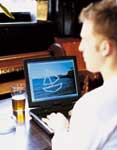 There are lots creative applications for computers - image processing, website design, audio and video editing. All will benefit from a large hard disk, lots of Ram, a fast processor and large screen. In short, an optimum laptop for these applications will be expensive. If you are serious about creative applications, either be prepared to spend lots of money or consider a desktop instead. Pick a laptop that lets you add a second monitor - this can improve productivity in creative applications. Typical spec 2000Mhz processor Hard disk 40Gb Memory 512Mb Ram Screen 15 inch Typical price £1,200+ Games Games require serious computer processing power. Lots of Ram memory and a fast processor are important but, vitally, the 3D graphics of modern games require special hardware to run properly. ATI and Nvidia are two of the main producers of 3D graphics hardware for desktop PCs. They make the 'Mobility Radeon' and 'GeForce Go' graphics cards, respectively. Look for either of these if games are important to you. A reasonably large screen will improve the action, too. Typical spec 1800Mhz processor Hard disk 40Gb Memory 512Mb Screen 15 inch Graphics Nvidia GeForce4 440 Go, or ATI Mobility Radeon 9000 Typical price £1,000+ Basic Internet If all you want to do is email and browse the web with a bit of word processing and office work on the side, you really don't need a very expensive, powerful laptop at all. All of the laptops on test would easily cope with these applications and you might want to get a lower spec model that is lighter with longer battery life or a bigger screen for the same money. Typical spec 1000Mhz processor Hard disk 20Gb Memory 256MB Ram Screen 14 inch Typical price £600+ Office work Complex spreadsheets in programs such as Excel can take quite a toll on the processing power of your computer. So, if you're going to be doing some serious number crunching, consider a more powerful laptop. If you're thinking of lugging it around, think about weight and battery life, while screen size could be an issue if you want to use it for large spreadsheets or PowerPoint presentations. Typical spec 1800Mhz processor Hard disk 30Gb Memory 256MB Ram Screen 15 inch Typical price £900+ | |||
Our TestsAll the machines we tested were fairly large and heavy because, in our price range, high levels of power are simply not available in smaller, lighter ultra-portable cases. They all weigh around 3.5kg - which is heavier than it sounds if you're going to carry it around all day. All came with hard drives ranging from 20 to 40Gb and most had 256Mb of Ram memory, which was upgradeable to at least 512Mb. They all had built-in combined DVD and CD-RW drives so they can be used for watching DVDs and burning your own CDs. All came with a built-in modem for accessing the internet, too. Overall, our laptops performed uniformly well and the differences we came across were only in niche areas. None developed any serious technical faults during testing and all had good quality screens. There were some differences in how versatile the laptops were when it came to upgrades and connections. For example, both the Acer Aspire 1406 LC and the Dell Inspiron 8200 'Performance' featured mini PCI upgrade slots. This is useful if you anticipate using upcoming wireless internet services but nothing to worry about if you are buying a laptop just to replace a large desktop PC at home. Six of the laptops in our test supported the new USB 2.0 standard, which is compatible with USB 1.0 devices but enables data to be transferred much faster between USB 2.0 devices, making it useful for adding external hard disk storage. Ease of useAnother area in which the laptops differed was ease of use. In particular, the quality of documentation that came with each machine to help you get going varied greatly. The instructions with the IBM ThinkPad R32 and the Hi-Grade Ultinote M6600-2000, for example, would not be suitable for a beginner. Our testers criticised those that came with the Advent 7011 and Packard Bell iGO 4451, too. But the Apple iBook, Compaq Presario 919 and Dell Inspiron were all commended for their documentation. The instructions with the Apple were the best. For users of Windows, it's worth bearing in mind that the latest version of the software - Windows XP - has online help that covers virtually everything you need to know, but beginners may be more comfortable with some hard copy and instructions tailored specifically to their purchase. The quality of the keyboards and touchpads on our laptops was also far from uniform. Whether you like a particular keyboard, or not, is often down to individual taste. Our panel of testers liked the layout of the keyboard on the HP/Compaq EVO1005V, for example, but felt that it was not responsive enough. It was also surprising to see that, despite being called laptops, many machines on test were actually uncomfortable for use on your lap. The Packard Bell and Toshiba Satellite 1410-604 could both be used comfortably, but testers said the uneven base and high running temperature of the Compaq Presario made it uncomfortable when used on the lap. Software testingTo see how well the machines could cope with a variety of everyday tasks, we tested them with three types of software. We tried office programs such as word processors and spreadsheets, multimedia packages such as video editing software, and computer games that require 3D hardware to work well. Almost all the laptops did well in the first two categories, but the ability to display complex 3D graphics at the speed required by modern computer games was only present on a handful of machines. The fastest machine for 3D games was the Fujitsu Siemens Amilo D7820. The Dell Inspiron 8200 'Performance', Hi-Grade Ultinote and both the Toshiba Satellite models coped well, too. In 'Laptops on Test', the pros and cons of each machine simply reflect what we considered to be above or below average, and should give you an idea of whether the laptop in question is the right one for you. | |||
Best BuysThe Dell Inspiron 8200 'Performance' was the best on test but is no longer available. We believe its replacement, the Inspiron 8500, will be a good laptop, but it's too different from the one we tested for us to recommend it here. Dell machines are sold direct at www.dell.co.uk. Of the remainder, the best on test was the Fujitsu Siemens Amilo D7820, which coped well with everything from games to spreadsheets. It has been upgraded with a larger hard disk and faster processor, and is called the Fujitsu Siemens Amilo D8820. You can call Fujitsu Siemens for stockists or buy it from www.dabs.co.uk for £1,240. In our survey on after-sales support, Fujitsu was rated as average. If you want a cheaper laptop and aren't interested in playing games, the HP/Compaq EVO N1005V did well. Despite scoring one point less than its brother, the Compaq Presario 919, its long battery life and lower price give it the edge. It now has a new processor and is known as the HP/Compaq EVO N1015V. You can buy it direct from www.hp.co.uk for £922, or contact the company for stockists. | |||
Laptops on Test
Total test score Price check The prices we give for Best Buys and in Which? tables are the cheapest we found in a survey of major high-street retailers. We also give the cheapest internet price we found for our Best Buys. Acer Aspire 1406 LC | Advent 7011 | Apple iBook | Compaq Presario 919 | HP/Compaq EVO1005v | Dell Inspiron 8200 | Fujitsu Siemens Amilo | Hi-Grade Ultinote | IBM Thinkpad | Packard Bell | Samsung V20XTC | Time | Toshiba Satellite | Toshiba Satellite ProAcer Aspire 1406 LC £1,356 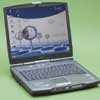 Pros This laptop was quick at completing the office and multimedia software tasks and quick at booting up, too. It includes a mini PCI slot, which will let you take advantage of wireless technology in the future. Cons Feet on the underside of case made it awkward to use on the lap. It only just passed our 3D graphics tests. Summary A satisfactory all-round performance but it's possible to do better for the money. Total Test Score 63% Being replaced by the similar, but more powerful, 1600 at the end of April
top
Advent 7011 £1,014  Pros This machine came with lots of bundled software and performed well in the office and multimedia tests. Cons Disappointing battery life and poor games performance, so not a good buy if you want to play games. It was difficult to use the buttons next to the touchpad and our testers felt the instructions could have been better. Summary Good selection of software included but, apart from its speed, the hardware was less impressive. Total Test Score 59% Likely to undergo cosmetic changes
top
Apple iBook 14.1" £1,200 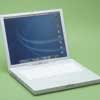 Pros Apple computers are the industry standard for creative applications. Our testers liked the look of this machine and commended its construction. It was easy to use and had good quality bundled software. The battery lasted for nearly four hours. Cons The iBook was slow compared with PC laptops and it is expensive. Limited range of software available compared with PC laptops, too. Summary Great if you can afford to spend a bit more, or if ease of use is essential. Better suited to people doing creative work. Total Test Score 62%
top
Compaq Presario 919 £1,000 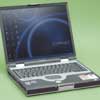 Pros This machine comes with good documentation and offered ample power for office and multimedia work. USB 2.0 compatible. Cons It had a fairly high running temperature and its base had a bumpy surface, both of which made it uncomfortable when used on the lap. Our test showed its 3D games performance was poor. Summary If you don't want to play games or use it on your lap, it is an excellent choice. Total Test Score 68% Has been replaced. The 2511 is the closest in terms of specification and price
top
HP/Compaq EVO1005v £930 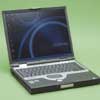 Pros This model had a well laid-out keyboard, good touchpad, and an impressive three-hour battery life. Cons It couldn't handle 3D graphics very well and the keyboard was criticised by our testers for not being responsive enough. Summary Like the other Compaq model, it was let down by its 3D abilities, so not suitable for games.
Now known as EVO1015V. Processor has been upgraded
top
Dell Inspiron 8200 'performance' £1,200 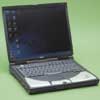 Pros Fast in all tests including the 3D performance tests. Both nipple and touchpad mouse control. Extremely sharp screen. Mini PCI slot included. Good documentation. USB 2.0 compatible. Cons It was awkward to insert and remove PC cards. Summary Did everything well and some things brilliantly, but sadly the Dell couldn't be included in our Best Buy selection because the model we tested has been discontinued. We are still confident about recommending Dell as a brand in general because it has done consistently well in previous product tests (see 'Laptops', March 2001, and 'Laptops', March 1999). Dell has also come out well in our survey of after-sales support (see 'Computer companies compared', November 2000). Total Test Score 72% Replaced by a completely different model, the Inspiron 8500 | |||
Laptops on Test: II
Total test score Price check The prices we give for Best Buys and in Which? tables are the cheapest we found in a survey of major high-street retailers. We also give the cheapest internet price we found for our Best Buys. Acer Aspire 1406 LC | Advent 7011 | Apple iBook | Compaq Presario 919 | HP/Compaq EVO1005v | Dell Inspiron 8200 | Fujitsu Siemens Amilo | Hi-Grade Ultinote | IBM Thinkpad | Packard Bell | Samsung V20XTC | Time | Toshiba Satellite | Toshiba Satellite ProFujitsu Siemens Amilo D7820 £1,100 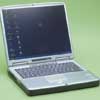 Pros Quick when running office and multimedia software and the fastest machine on test for 3D games. Good response from the touchpad. USB 2.0 compatible. Cons The touchpad was too recessed and the keyboard was criticised for being cluttered. Summary Does everything well, especially games, but let down by ease of use.
Discontinued. The new D8820 is similar, but has a larger hard disk and faster processor for £1,240
top
Hi-Grade Ultinote M6600-2000 £1,285 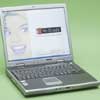 Pros Big high resolution screen. It was fast in all our software tests, and had good 3D performance, too. It comes with four USB 2.0 slots. Cons The documentation is not very good for the beginner, and not much bundled software was included. The battery depletion warnings were insufficient and the machine got hot when in use. Summary Fast but flawed. Could be harder for the novice user to get started. Total Test Score 61% General enhancements to specification likely
top
IBM Thinkpad R32 £1,488  Pros Responsive touchpad with useful scrolling buttons. Long battery life. Fast at office and multimedia tasks. Cons The documentation was not suitable for the beginner and no CD-Roms were included to restore the laptop should it fail. The keyboard was criticised for being too springy, and the 3D performance was poor. Not all of our testers liked the touchpad. Summary A solid machine, but one that seems to be aimed more at the corporate market than the private consumer. Total Test Score 67%
top
Packard Bell iGo 4451 £914 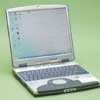 Pros Quick at loading up the Windows operating system and had useful additional buttons above the keyboard. The flat base and low operating temperature made it a laptop you could use comfortably on your lap. Cons The 3D graphics were poor and the documentation could have been better. Summary A good machine overall but not one that is outstanding. Total Test Score 60% Now discontinued. The 2000 series is similar
top
Samsung V20XTC 1800 £914 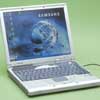 Pros The Samsung was small and light, weighing just 2.8kg, with a long battery life. It performed the office software tests at decent speeds and is USB 2.0 compatible. Cons It didn't do well in the 3D graphics tests, so don't buy it to play computer games. The touchpad was too recessed and the testers didn't like the feel of the keyboard. Summary Its light weight makes it a good model if you want to carry it around with you, but otherwise it was unspectacular. Total Test Score 60% Has been replaced by the V25, which has a faster processor
top
Time Traveller 512 GT 15.1" CD-R Pro £1,000 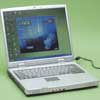 Pros Good overall performance on software speed tests. USB 2.0 compatible. Cons Bad 3D performance and below average battery life. It's also worth noting that in our unique customer surveys, Time has had below average after-sales support (see 'Computer companies compared', November 2000, p34 ). So, if you want the ready support of a helpline, consider buying another brand. Summary This machine is nothing special and got the lowest score. Total Test Score 57%
top
Toshiba Satellite 1410-604 £1,300  Pros This laptop did well in the software and 3D performance tests. It was of solid build. Its smooth underside made it comfortable for use on the lap. It had three USB sockets and a built-in floppy drive, which some users might find useful as you don't have to carrying the drive separately. Cons The touchpad was criticised for responding slowly and some of the markings on the keyboard were not clear. Summary A good machine let down by ergonomic issues, such as the touchpad. Total Test Score 66%
top
Toshiba Satellite Pro 2100 £929 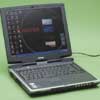 Pros It coped with all types of software including 3D games. It was of solid construction and had a good quality screen. Like the other Toshiba, it included an internal floppy disk drive. Cons As with the other Toshiba laptop in our test, it was let down by the ergonomics of its touchpad and keyboard. Summary A very similar range of abilities to its slightly heavier brother. Total Test Score 66% | |||
Contacts
|